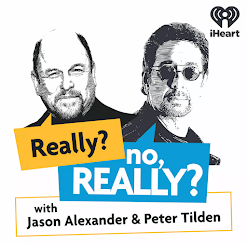If you want to learn to touch type here are some resources that should point you in the right direction. It just involves a lot of repetition of typing nonsense words to teach your hands where the letters are on the keyboard so that you don't have to consciously think about them.
Listen
This record from 1960 sounds like it should have a text book to accompany it (not found an online copy yet) but also the man who's 'narrating' reads everything out, so for example he says 'fff space ddd space sss space' and so on rather than relying on you having to read something. I've only listened to 10 minutes or so, so perhaps there's a point where the lack of book becomes a problem. To be honest you can really just make up some exercises and words using letters on the 'home row' (asdfghjkl;) and familiarise yourself with the nobbly bits on the 'home keys' (f and J) which is where a touch typist naturally anchors their hands.
"Touch Typing Made Simple: A Sound Teaching Method" (YouTube). It's also available as an audio file on the Internet Archive.
Read
The Internet Archive also has several books related to touch typing. This search results page will show you everything that they have that's related to touch typing between 1930 and 1980.
Learn Touch Typing in 4 Easy Lessons (1968) - to read this you'll need to create a (free) account at the Internet Archive and then borrow the book for an hour at a time. There are a lot of repetitions - "The the following about 25 times..." - that's really all touch typing is. Below is an excerpt from page 9 of 50.
Other books include "Touch typing in ten lessons" from 1963 (84 pages) which will teach you to type "a lad has a glad dad; dad had half a shad salad;" or "Modern Typing an Australian Basic Course" from 1967 (129 pages) which will teach you that 'skill comes from drill' - I don't think you need an account to read that one.
Online
Just a selection but try Monkey Type or TypeRacer or just type (ha!) typing test into Google or your preferred search engine.
And just to prove that I can type below is my one minute test, I was 86 words per minute with 98% accuracy. Normally I prefer to type faster and make more mistakes because I think everyone has a natural typing speed in much the same way that everyone has their own natural walking pace...
For the work blog (CS4FN) I also wrote a little about the history and limitations of the QWERTY keyboard which might be of interest, though won't help you learn to type of course: Stretching your keyboard: getting more out of QWERTY.
Background
Touch typing is a useful skill as it generally makes you a lot faster and more accurate when typing on a keyboard, and you don't need to look at your hands - it's ideal if you wanted to type up written notes for example. That said plenty of people are very whizzy with the 'hunt and peck' method of using a couple of fingers. Touch typing uses all the fingers (8 to type letters, thumbs for spacebar) so is just faster.
I was chatting with a couple of people on Twitter yesterday about touch typing, something I learned as an 18 year old and have found incredibly useful on a daily basis. My mum was a competent typist and we had a typewriter in the house I grew up in and was occasionally allowed to play with it. I'm not sure if mum put the idea into my head that I should do a short typing course at a local secretarial college - I must have been quite keen (otherwise it simply wouldn't have happened). My memory of it is that it was a two-week morning course (Monday to Friday) of repetitive 'drills' of letters and words (some gibberish, just to practise moving your fingers over the keyboard). I don't remember practising at home but may have done.
Two weeks later I had a typing certificate of 55 words per minute (wpm) and never took another lesson. I just got on with typing and 35 years later I'm fairly comfortable at 80 wpm and can type faster to play about on tests but don't go much above 85 when I'm trying to be reasonably accurate. Any higher and I just make more mistakes.
Making mistakes when typing on a laptop keyboard isn't much of a problem though because it's so easy to delete or overwrite, so I type fast and 'fix in post-(production') ;) On a typewriter moving the 'cursor' to cross something out and redo was a bit more effortful or it might also involve Tippex or other liquid paper to paint over the wrong letter then retype once it had dried. If the mistake is one that often occurs you can put things in place to ensure that everytime you type, for example, 'teh' instead of 'the' the computer automatically corrects it.
I don't know if people should be learning to touch type or if it offers any other transferable useful skills but I'm glad I have it.






